
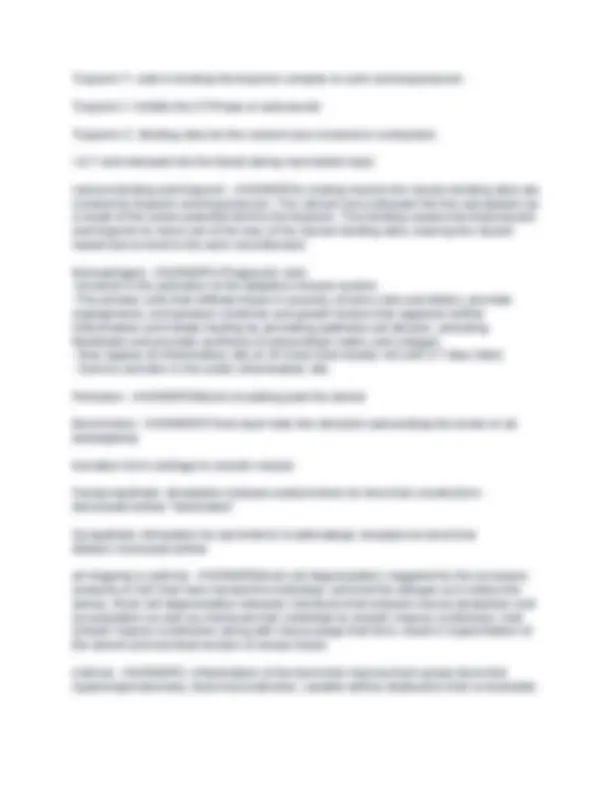
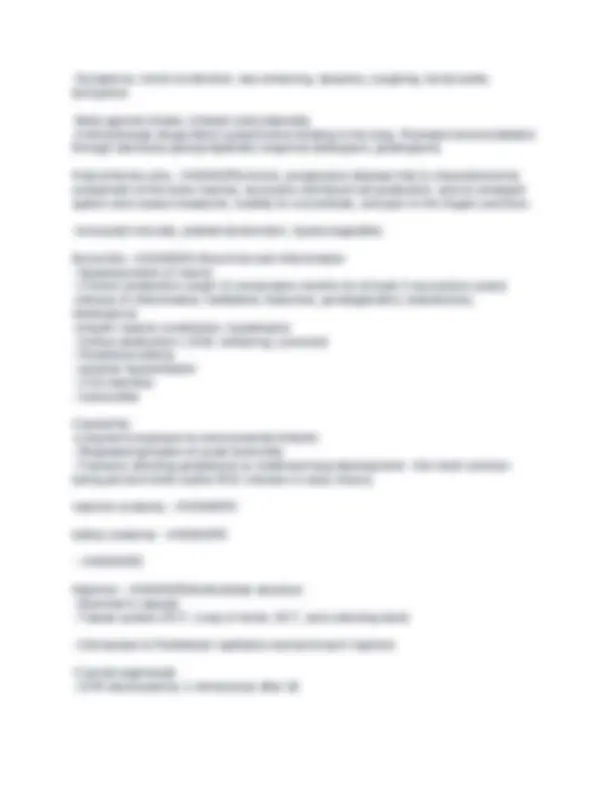
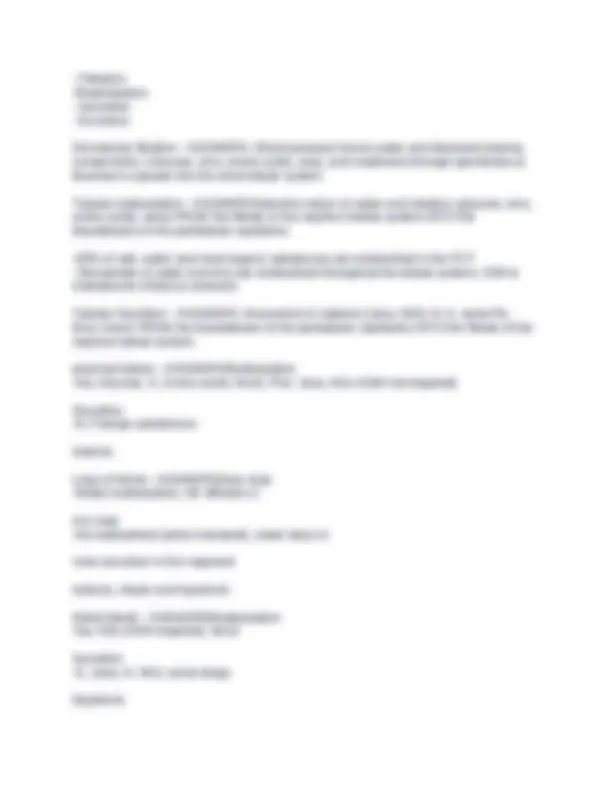
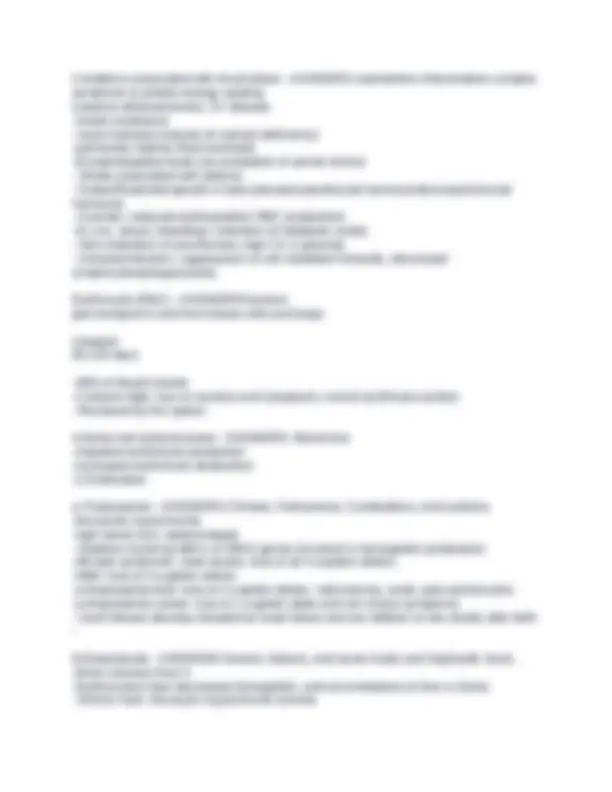
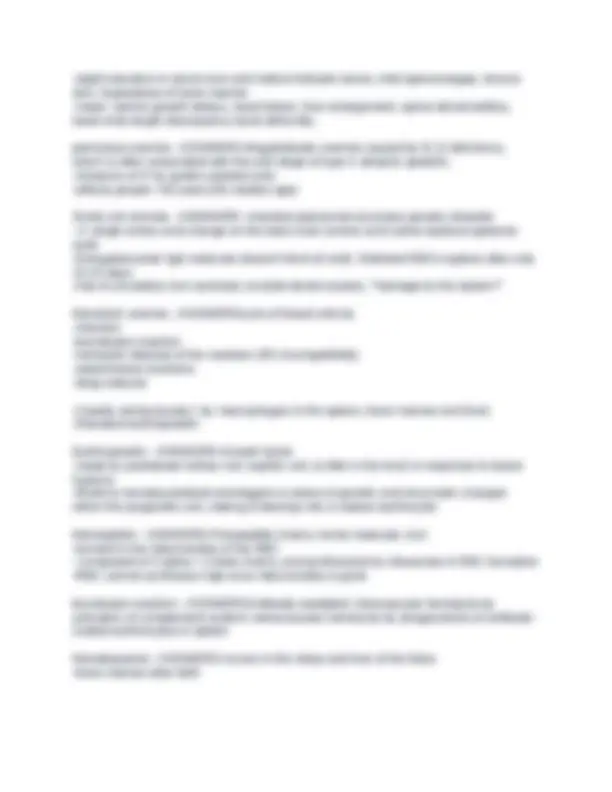


Study with the several resources on Docsity

Earn points by helping other students or get them with a premium plan


Prepare for your exams
Study with the several resources on Docsity

Earn points to download
Earn points by helping other students or get them with a premium plan
Community
Ask the community for help and clear up your study doubts
Discover the best universities in your country according to Docsity users
Free resources
Download our free guides on studying techniques, anxiety management strategies, and thesis advice from Docsity tutors
ADVANCED PATHOPHYSIOLOGY Midterm REVIEW NR507
Typology: Exams
1 / 9

This page cannot be seen from the preview
Don't miss anything!






Glomerulonephritis - ANSWERSThe glomerular-capillaries can trap blood-borne Ab & Ag-Ab complexes
-Symptoms: chest constriction, exp wheezing, dyspnea, coughing, tachycardia, tachypnea -Beta-agonist inhaler, inhaled corticosteroids, -Anticholinergic drugs:Block acetylcholine binding in the lung. Promotes bronchodilation through decrease parasympathetic response (tiotropium, ipratropium) Polycythemia vera - ANSWERSchronic, progressive disease that is characterized by overgrowth of the bone marrow, excessive red blood cell production, and an enlarged spleen and causes headache, inability to concentrate, and pain in the fingers and toes -increased viscosity, platelet dysfunction, hypercoagulable, Bronchitis - ANSWERS-Bronchial wall inflammation
1cm almost never pass on their own -Colic to lateral flank of abd = midureter obstruction - Urgency, frequency, incontinence= obstruction of lower ureter or ureterovesical junction. may have blood -High PH: CA -Low PH:uric acid Role of angiotensin converting enzyme (ACE) - ANSWERSWhen renin is released, it cleaves an α-globulin (angiotensinogen produced by liver hepatocytes) in the plasma to form angiotensin I, which is physiologically inactive. In the presence of ACE produced from the pulmonary and renal endothelium, angiotensin I is converted to angiotensin II. Angiotensin II stimulates secretion of aldosterone by the adrenal cortex, is a potent vasoconstrictor, and stimulates antidiuretic hormone secretion and thirst
Conditions associated with renal failure - ANSWERS-malnutrition-inflammation complex syndrome or protein-energy wasting Leads to atherosclerosis, CV disease -Insulin resistance
B-thalassemia - ANSWERS-Greeks, Italians, and some Arabs and Sephardic Jews. -More common than A -Erythrocytes have decreased hemoglobin, and accumulations of free a chains